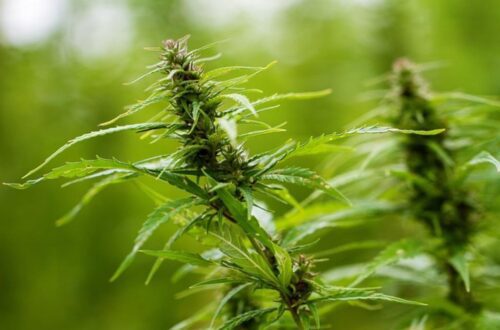Imagine a plant that grows quickly, strengthens the soil, and supports other plants in thriving around it. Seems like a dream come true for reforestation efforts, right? Well, it’s not a fantasy—hemp fits the bill perfectly!
With its rapid growth cycle and minimal need for pesticides, hemp offers a sustainable solution to restore nature’s balance. By integrating hemp into reforestation projects, we can address pressing issues like soil degradation and biodiversity loss.
Let’s explore how this versatile plant can play a pivotal role in rejuvenating our forests and ensuring a greener future for our planet.
Hemp As a Sustainable Solution for Reforestation
Hemp’s fast growth cycle is a game-changer. In just four months, hemp can reach its full height compared to the years it takes for trees. This rapid growth means more biomass and quicker results in reforesting areas that have been stripped bare.
Additionally, hemp improves soil health. Its deep roots prevent erosion, enhance soil structure, and help fight soil compaction. But that’s not all—hemp can also restore contaminated soils by absorbing heavy metals and other pollutants.
Biodiversity benefits too. Hemp fields provide a habitat for various insects and animals, contributing to a more resilient ecosystem. This diversity promotes the growth of other native plants, creating a richer and more sustainable environment.
Water conservation is another perk. Hemp requires significantly less water than many traditional crops, making it ideal for reforesting arid and semi-arid regions.
The environmental positives don’t end there. Hemp also captures carbon dioxide more efficiently than trees, aiding in the fight against climate change. By pulling more CO2 from the atmosphere, hemp helps mitigate the greenhouse effect and global warming.
Clearly, incorporating hemp into reforestation projects offers multiple sustainable advantages. It’s a proactive step toward a healthier planet.
The Environmental Benefits of Hemp in Reforestation
Hemp is a powerhouse when it comes to purifying air. It absorbs CO2 more efficiently than many other plants, acting as a natural carbon sink. This means that the more hemp we plant, the more greenhouse gases we can potentially offset.
Soil Revival
Hemp’s thick root system is a boon for soil quality. These roots not only hold the soil together, preventing erosion, but also aerate it. This makes the ground more fertile and better suited for other plants to thrive, turning neglected land into rich, usable soil.
Flood control is another impressive benefit. Thanks to its robust roots, hemp can help manage water runoff, reducing the risks of floods. This makes it a great candidate for areas prone to excess water or landslides.
Pollution reduction is a lesser-known advantage. Hemp can absorb toxins and heavy metals from the soil, a process known as phytoremediation. By planting hemp in contaminated areas, we can naturally cleanse the earth without resorting to harsh chemicals.
Promoting Biodiversity
Hemp fields are like little ecosystems. They provide shelter and food for various species, fostering greater biodiversity. This creates a ripple effect, supporting a wider range of plants and animals in the area.
Lastly, hemp’s versatility means its byproducts can be used in eco-friendly products like biodegradable plastics and organic textiles. This reduces our reliance on fossil fuels and promotes more sustainable consumption habits.
All these factors make hemp an eco-friendly choice for reforestation efforts. It’s clear that incorporating hemp can lead to a healthier, more balanced environment.
Implementation of Hemp in Reforestation Projects
Integrating hemp into reforestation projects begins with selecting the right locations. Areas with degraded soil, high erosion risk, or previous heavy metal contamination are prime candidates. Hemp thrives in a variety of soil types, making it a versatile option for different environments.
Community Engagement
For successful hemp reforestation, local communities must be involved. Educating people about the benefits of hemp and how it can improve their environment and livelihood is crucial. This buy-in helps ensure the sustainability of the project over the long term.
Once a site is selected, preparing the land is the next crucial step. Clearing invasive species and ensuring the soil is conducive to hemp growth optimizes the planting process. Since hemp grows quickly, monitoring its progress is essential to identify any immediate issues.
Partnering with environmental organizations can amplify the impact. Many organizations have the expertise and resources to make these projects more effective. Collaborations like these also bring much-needed attention and funding.
Monitoring and Maintenance
After planting, continuous monitoring is key. Regular checks help track the health of hemp plants and address any problems early. Local farmers and volunteers can be trained to handle day-to-day maintenance, fostering a sense of ownership in the project.
Harvesting hemp offers another layer of benefit. The harvested material can be used for various eco-friendly products or sold to generate funding for further reforestation projects. This creates a sustainable cycle of environmental and economic benefits.
Lastly, it’s essential to measure the success of hemp reforestation projects. Metrics like soil health improvement, biodiversity increase, and carbon sequestration rates provide tangible evidence of the benefits. Sharing these success stories can inspire more initiatives worldwide.
By following these steps, implementing hemp in reforestation projects can transform struggling ecosystems into thriving, sustainable environments.

Maximizing Success: Best Practices for Using Hemp in Reforestation
Success in hemp-based reforestation projects hinges on adhering to a few best practices. By following these guidelines, we can ensure the maximum positive impact on the environment and communities involved.
Soil Preparation
Start with proper soil preparation. Conduct soil tests to understand its composition and nutrients. Adding organic matter and compost can greatly improve soil health, giving hemp a better foundation to grow robustly.
Choose hemp strains suited to the local climate and soil conditions. Some strains are more resilient and can better tolerate harsher conditions, thereby increasing the chances of project success. Local agricultural experts can offer valuable advice on the best varieties to plant.
Planting Techniques
When planting, consider using companion planting techniques. Growing hemp alongside other native plants can enhance biodiversity and deter pests. It also contributes to a healthier ecosystem overall.
Spacing is crucial. Ensure hemp plants have enough space to grow without competing for light, water, and nutrients. Overcrowding can stunt growth and reduce the overall health of the plants.
Regular irrigation, especially during the initial stages, is another key practice. Hemp needs a fair amount of water to establish its roots, though it is relatively drought-tolerant once mature. Drip irrigation systems can be an efficient way to meet this need.
Monitoring and Adjustments
Constant monitoring allows you to make timely adjustments. Regularly check for signs of pest infestations or soil nutrient deficiencies. Simple interventions like adding natural fertilizers or using organic pest control methods can keep the plants healthy.
Track the growth and health metrics of the hemp plants. Using drones or satellite imagery for large-scale projects can provide valuable data without disturbing the plants.
Lastly, encourage continuous learning and adaptation. As new research and better techniques emerge, adapting your approach ensures you stay on the cutting edge of reforestation strategies.
By integrating these best practices, we can significantly enhance the success rate of hemp reforestation projects, contributing to a greener and more sustainable future.
The Future of Reforestation Efforts Utilizing Hemp
As we look to the future, the potential for hemp in reforestation efforts is incredibly promising. This versatile plant could become a cornerstone in our battle against deforestation and climate change.
Technological Integration
One of the most exciting prospects is the integration of advanced technology with hemp cultivation. Innovations like precision agriculture, which uses data analytics, GPS, and IoT sensors, can optimize planting and growth conditions. This leads to higher success rates and a more efficient use of resources.
Research and development will play a crucial role too. Scientists are continuously exploring ways to improve hemp strains, making them more resilient and beneficial for various ecosystems. Genetic advancements could result in plants that are even better at capturing carbon and restoring soil health.
Community Involvement
Community involvement and education will also be key. Engaging local communities in reforestation efforts ensures that these projects are sustainable in the long run. By providing education about the benefits of hemp and how to cultivate it, we can create a grassroots movement that drives real change.
Urban areas can also get in on the action. Concepts like urban reforestation, where hemp is planted in city spaces to combat pollution and heat, are gaining traction. These initiatives not only improve air quality but also enhance the well-being of city residents.
Global Collaboration
Global collaboration is essential. Countries around the world need to share knowledge, resources, and best practices to make these efforts as impactful as possible. International organizations and governments can offer support and create policies that encourage the use of hemp in reforestation.
The future is bright for hemp-based reforestation. With the right combination of technology, community involvement, and global cooperation, we can harness the full potential of this incredible plant. It’s an exciting journey ahead, and every step brings us closer to a healthier planet.
Conclusion: Harnessing the Power of Hemp for Sustainable Reforestation
In summary, hemp offers an exciting and viable solution for tackling deforestation and promoting environmental sustainability. Its rapid growth and ability to restore soil health make it a powerful ally in our reforestation efforts.
By integrating advanced technology, we can optimize hemp cultivation and ensure that our resources are utilized efficiently. Innovation will continue to drive improvements in hemp strains, making them even more effective in capturing carbon and supporting diverse ecosystems.
Community involvement plays a crucial role as well. When local communities are educated and engaged in reforestation projects, the initiatives have a better chance of long-term success. Urban reforestation initiatives can transform city spaces, improving both air quality and residents’ well-being.
Global collaboration remains essential. By sharing knowledge and resources, countries around the world can enhance the impact of hemp-based reforestation. Support from international organizations and government policies can further encourage the adoption of hemp in these efforts.
Looking ahead, the future of reforestation using hemp is incredibly promising. It’s not just about planting more trees; it’s about using innovative and sustainable approaches to heal our planet. Together, through technology, community support, and global cooperation, we can harness the full potential of hemp and make significant strides toward a greener, healthier world.






